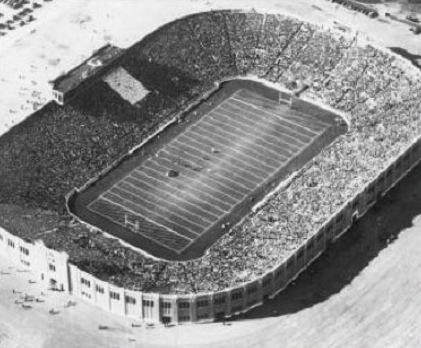
Here is Notre Dame Stadium on October 11th, 1930, when it was officially dedicated for the Navy game. The stadium's first actual game featured Southern Methodist the previous week. Notre Dame, the defending mythical national champion (MNC), won all its games again in 1930, finishing 10-0. It was the climax of Notre Dame's first era of greatness, but also its last chapter. Their legendary coach, Knute Rockne, died in a plane crash the following Spring, bringing an end to college football's "Golden Age."

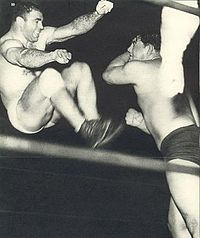 Three members of the 1929 "shock troops" that I mentioned in the 1929 article moved up to 1st string this season
Three members of the 1929 "shock troops" that I mentioned in the 1929 article moved up to 1st string this season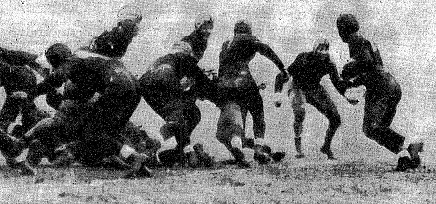
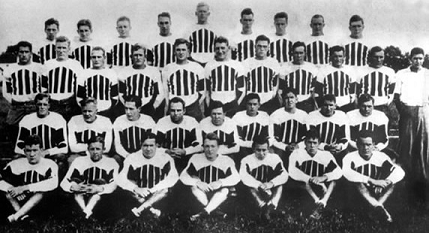
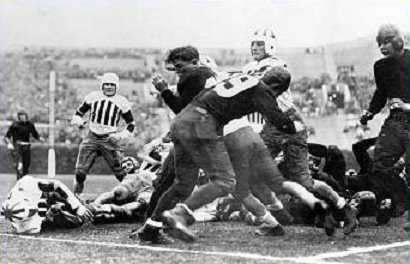
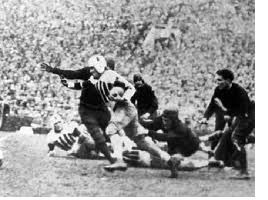 The
Rose Bowl put up enough temporary seating to hold 81,000 fans, and they
still claim that as the game's attendance, but there was a drizzling
rain on gameday, and most crowd estimates ran from 60,000 to 70,000.
Washington State showed up in red-- not just their jerseys and pants,
but also their helmets, socks, and shoes. Wallace Wade once again
started Alabama's 2nd string as "shock troops," the lone exception
being tackle and captain Charles Clement. As usual, nothing happened in
the 1st quarter, but the regulars came in and washed over WSU like a
crimson tsunami in the 2nd quarter.
The
Rose Bowl put up enough temporary seating to hold 81,000 fans, and they
still claim that as the game's attendance, but there was a drizzling
rain on gameday, and most crowd estimates ran from 60,000 to 70,000.
Washington State showed up in red-- not just their jerseys and pants,
but also their helmets, socks, and shoes. Wallace Wade once again
started Alabama's 2nd string as "shock troops," the lone exception
being tackle and captain Charles Clement. As usual, nothing happened in
the 1st quarter, but the regulars came in and washed over WSU like a
crimson tsunami in the 2nd quarter.